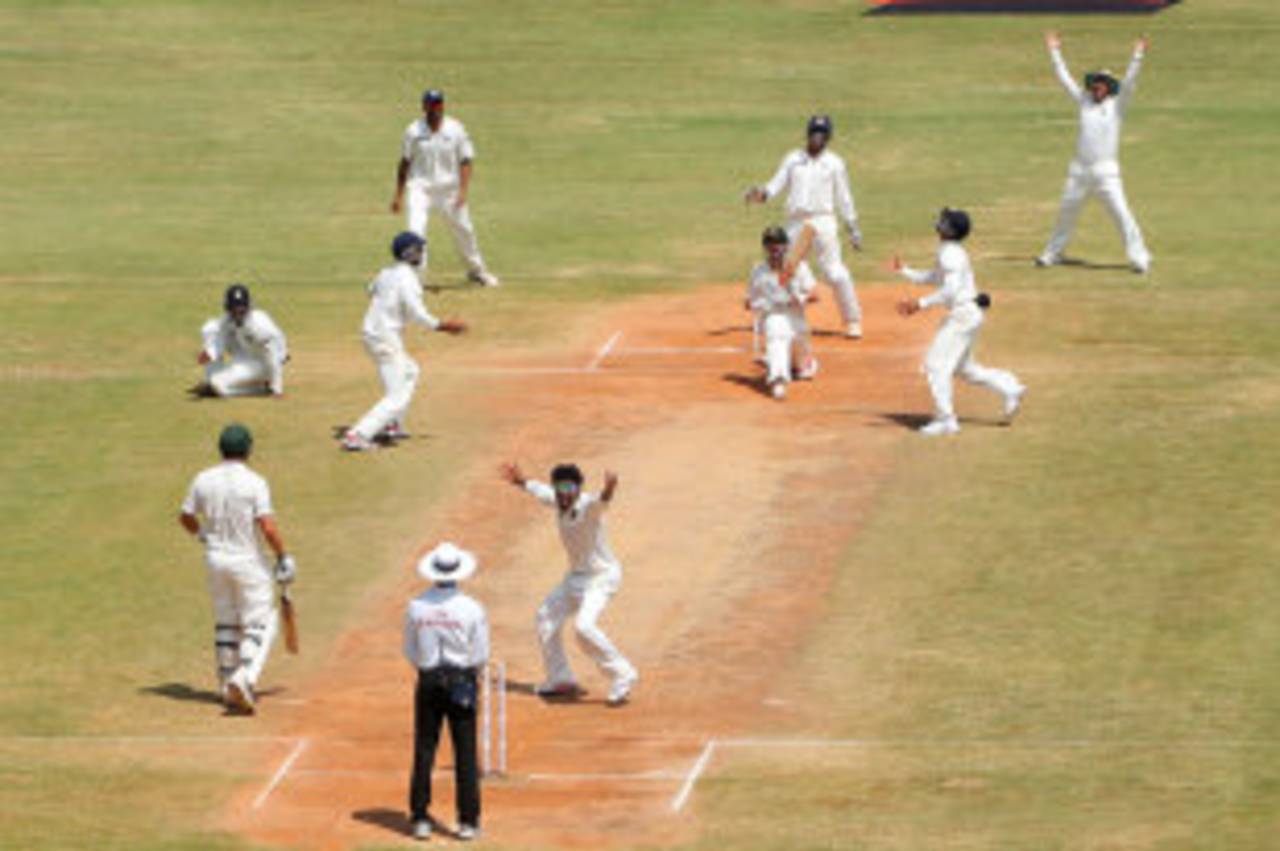MS Dhoni has said that while fielding strategies and placements on India's slow, low turners have re-written the conventional textbook around attack and defence, the assessment of pitches and tactics appeared somewhat slanted.
Sixteen wickets fell on day three and four innings were completed over three days at the Kotla as India finished its 4-0 creaming of Australia. When asked whether surfaces like those in Delhi were right for Test cricket, Dhoni's reply was sardonic and also contained his response to past criticism of his captaincy. "Well, you'll have to answer what is 'right' and what is 'wrong' because your opinion really counts ... When four fast bowlers play, it becomes strategy, when three spinners or four spinners play, it becomes a bad wicket."
He went on to give an example of how the interpretation of the same deep-field placements were different for different captains: "For Virender Sehwag, if you have a deep point and a deep-third man and a deep-square leg, it's a strategy. If MS Dhoni has a deep point and a deep-square leg for David Warner, it's a defensive field set. You have to see the mindset [of the batsman] and accordingly go ahead."
Dhoni also stated that the era of aggressive cricket, wherein having a mid-on up was common, has gone. Dhoni said: "The kind of cricket that we play has entirely changed … The era of seeing aggressive cricket, where you had to have a mid-on up, has gone." The in-out field, used in plenty by the Indians, has become the norm with positions distributed between fieldsmen in catching positions and the boundary riders.
In the Delhi Test, Dhoni described the offspinner's conventional field: "You have a short leg, a backward, and a slip. And you have three fielders - deep midwicket, long-on and deep-square leg." The latter three may have been conventionally considered boundary-saving, defensive fielders, but Dhoni said today's field placements had much to do with studying the comfort zone and mindset of individual batsmen. Whether to employ a mid-on or long-on fielder was a decision that had to be made through a flexible reading of different batsmen, he said, and not on whether to stop the single or the boundary against all batsmen or the scoreboard situation.
"You read the batsmen to see if he is in the mindset of rotating singles, if there's a mid-on, deep midwicket and four catching fielders, and if he can rotate every ball. If he's not having any problems, then you try to bring in the mid-on fielder or deep-midwicket fielder to build up the pressure."
If a batsman has more confidence going over the infield, "especially on wickets like these, it's important that you don't concede runs in a bunch". The aim of the deep fielders was, he said, to deny the batsman the boundaries and check the opposition scoreboard from racing ahead. At a time like that, Dhoni said, he was fine with the batsmen taking singles because it created more chances. "If you rotate [the strike] four times, you get four runs and [on] those four runs, you can get them out as many times."
Sharda Ugra is senior editor at ESPNcricinfo
